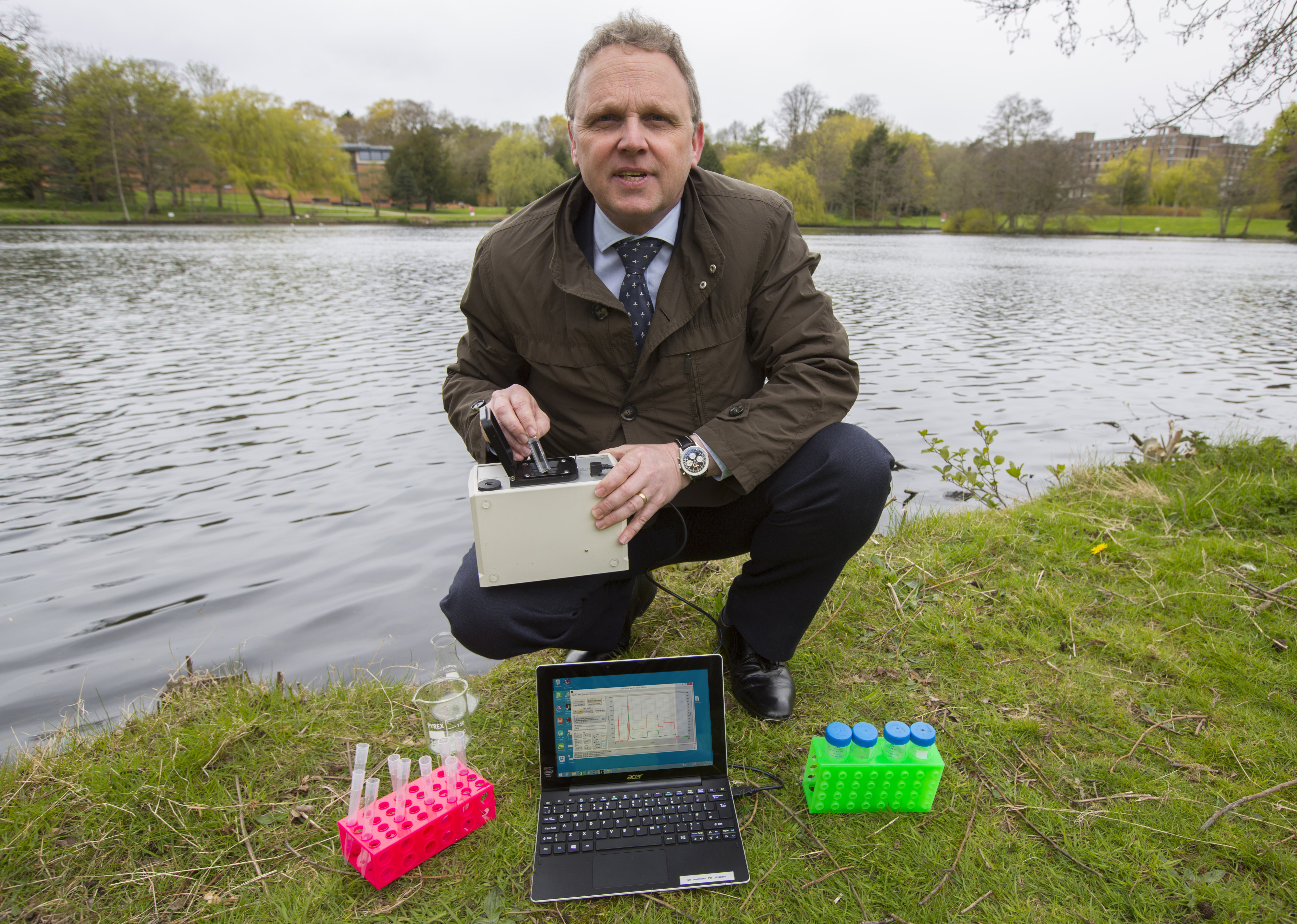Birmingham water experts help China clean sewage treatment
Experts at the University of Birmingham have developed a unique device that could help to make wastewater treatment plants in China run more effectively – cutting costs and emissions of planet-warming greenhouse gases.
A team from the University’s Department of Civil Engineering has developed optical equipment which uses water’s natural fluorescence to ‘scan’ treated wastewater found in sewage treatment processes and determine whether the plant is working efficiently.
They are now working with the China National Electric Apparatus Research Institute at the Datansha wastewater treatment plant in Guangzhou, southern China, to use fluorescence-based instruments to quickly discover whether too much energy is being used in treating the sludge.
The activated sludge process makes up over 50% of the energy costs associated with wastewater treatment. As China expands its treatment infrastructure, wastewater experts face the challenge of delivering environmental improvements, reducing operating costs and improving the financial performance of the water industry.
 Professor John Bridgeman, pictured above, led the team of researchers who developed the ‘Duo Fluor’ device which will be used in Guangzhou.
Professor John Bridgeman, pictured above, led the team of researchers who developed the ‘Duo Fluor’ device which will be used in Guangzhou.
He said: “The ‘Duo Fluor’ device is a huge step forward in managing wastewater systems and has the potential to improve process efficiency at water treatment works. This will help to reduce energy usage, lower operating costs and, ultimately, cut greenhouse gas emissions.
“Having developed a novel and innovative solution to measure the fluorescence of wastewater, we are now using equipment and techniques developed at the University of Birmingham to work with our water utility partners in Guangzhou to monitor and control the quality of wastewater.“
Current tests on whether the sewage is being over-treated take up to five days to complete, during which time sludge conditions can change – rendering test results useless for plant control.
The new device allows experts to analyse wastewater treatment processes in less than one minute – allowing continuous monitoring of how efficiently a plant is operating, as well as helping to control the level of pollutants contained in discharges from treatment plants into rivers.
The instrument has a range of potential uses within the global water industry, including:
- Detecting organic and microbial matter in a range of water qualities – from sewage to drinking water;
- Improving process efficiency at water treatment works;
- Identifying potential contamination of service reservoirs and distribution systems; and
- Testing river water quality at abstraction points and treatment works’ discharge points.
It could also save lives around the globe by quickly and simply testing whether water supplies are safe to drink – particularly in refugee camps and disaster zones.
The researchers are now working with experts from Oxfam and funding from the Engineering and Physical Sciences Research Council and the Diageo Foundation to refine the instrument design and make it ideally suited to disaster relief and areas of poor sanitation.
The device uses portable and inexpensive, off-the-shelf equipment to reveal unsafe sources of drinking water in less than 30 seconds. It should help reduce the risk of future widespread outbreaks of cholera and other water-related diseases in areas of poor sanitation.
Professor Bridgeman added that despite the hard work of those responding to the UN Millennium Development Goals, there are still 768 million people who do not have access to safe drinking water supplies and 2.5 billion are without access to improved sanitation services.
Current methods of analysing the quality of drinking water take more than 12 hours and use expensive reagents. This is not fast enough to meet people’s needs in disaster zones and poor communities.
“Duo Fluor allows water experts to interpret results, but also uses user-friendly technology to allow non-experts to test whether water is safe to drink,” said Professor Bridgeman. “This means that people in the poorest communities could help to protect themselves from unsafe drinking water.”
ENDS
Notes to Editors
- The University of Birmingham is ranked amongst the world’s top 100 institutions, its work brings people from across the world to Birmingham, including researchers and teachers and more than 5,000 international students from over 150 countries.
- All water fluoresces, although the insensitivity of the human eye to the appropriate wavelengths renders fluorescence invisible to us. However, a large body of research has demonstrated that water fluorescence is particularly good at identifying faecal contamination.
- The fluorescence emitted from humic and fulvic substances, fluorescent pollutants such as whitening agents, and microbially-derived intrinsic fluorescence from both cellular material and exudates can all be detected.
- The advantages of fluorescence include a rapid analysis time, no sample pre-treatment necessary, and a sample volume of a few microlitres.
- The Birmingham team has developed a prototype dual-LED instrument, ‘Duo Fluor’, capable of detecting fluorescence at wavelengths that can be used as surrogates for both microbial and organic carbon presence. The prototype performance has been benchmarked against a research grade instrument and excellent performance recorded.
For more information or interviews, please contact Tony Moran, International Communications Manager, University of Birmingham on +44 (0) 121 414 8254 or +44 (0)782 783 2312
Zhou Yanwei, China National Electric Apparatus Research Institute, Co. Ltd - http://www.CEI1958.com
T:020 – 89050940 MP:18688892805 Email:zhouyw@CEI1958.com